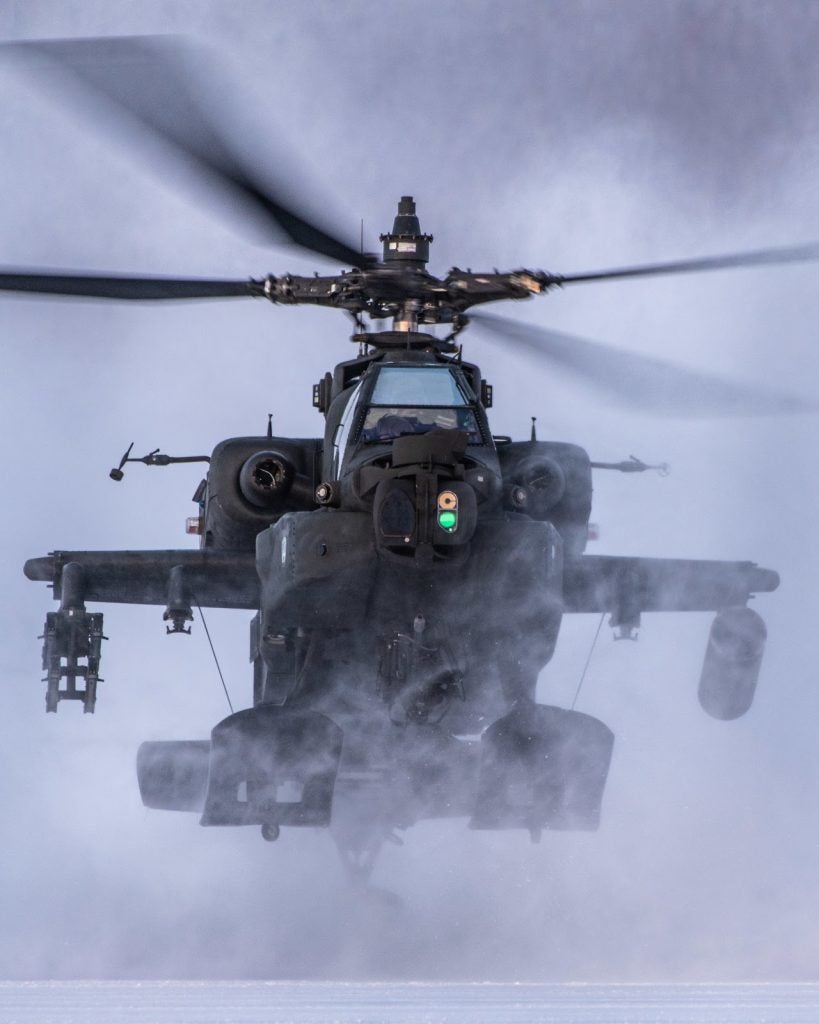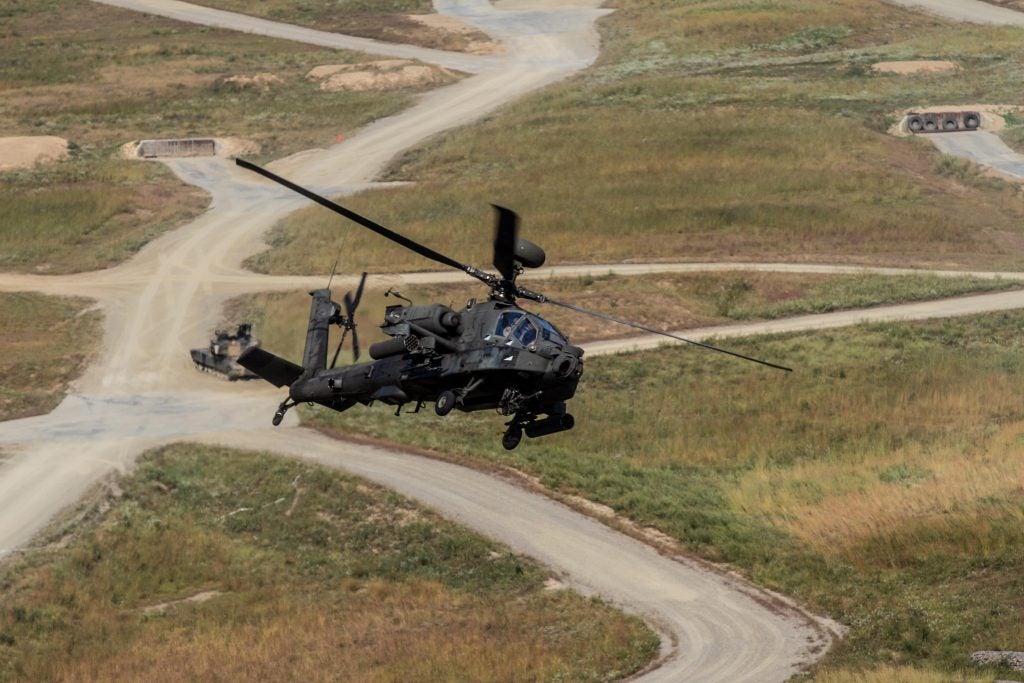In Profile: AH-64E Version 6, the Network-centric Attack Helicopter
Few weapon systems symbolize post-Cold War US military operations more than the AH-64 Apache. Entering service in 1986, the Apache arrived just in time to see its intended enemy, the vast tank fleets of the Soviet Union, collapse into political disarray. Saddam Hussein would see to it that the Apache had an opportunity to prove itself in 1991 with the aircraft firing the first shots of the Gulf War. Its tank-killing abilities were proven but would never again be utilized to such an extent. The times were changing and when the global war on terror began in 2001, the Apache had to quickly shift roles. Here it would become infamous for its thermal gun camera footage, laying down American foreign policy from its aerial perch. Over the course of the nearly two-decade-long conflict, the AH-64 would build a reputation as a fantastic close air support/overwatch platform and would see export to 15 allied countries.
However, times would change once again. In late 2013, the Chinese began building their artificial island chain and the US would pivot its focus to the Pacific. In order to remain relevant, the US Army needed to build up an ability to project firepower in a maritime dominated environment. The Russian seizure of Crimea in 2014 and subsequent intervention in Syria diluted this focus somewhat but the idea remained. The need to shift away from fighting insurgencies and focus on peer and near-peer opponents remained. This desire would drive the development of the final variant of the Apache, the AH-64E Apache Guardian. The aircraft’s development was broken into 3 block upgrades; Version 1, 4, and 6. V1 and V4 were completed in 2015 and 2017 respectively. The most ambitious, V6, was started in 2018 with development and testing to wrap up by 2026, just in time for the Apache’s 40th anniversary in service with the US Army. V6 will focus on adding a maritime capability to the aircraft as well as enhancing network connectivity and creating a strong counter-UAS ability.
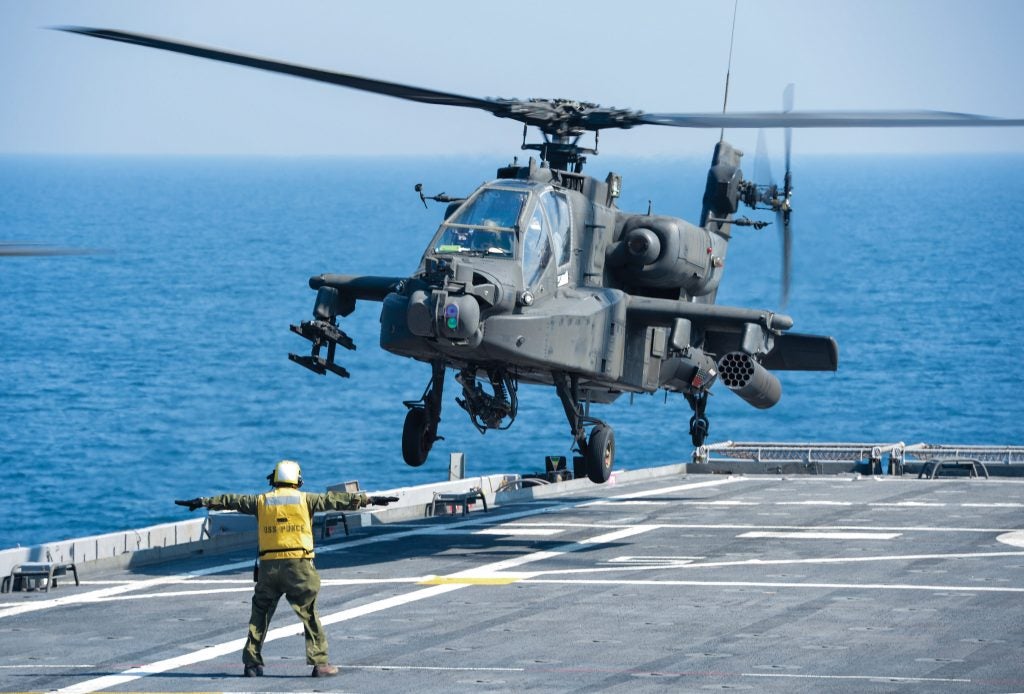
Sensor Upgrades
First a look at the radar. Originally the AN/APG-78 Longbow radar was intended for tracking ground vehicles such as tanks and SPAAGs in poor visibility conditions for engagement with radar-guided Longbow Hellfire missiles. Compared to IR sights, radars allow for more rapid engagement of targets which is vital for “high noon shootouts” with enemy short-range air defenses where the victor is whoever shoots first (assuming they are in each other’s engagement envelopes). Apaches weren’t expected to engage small maritime targets so the ability to track them with the radar was never integrated. However, with the strategic shift discussed earlier the Army has sought to tailor Longbow’s capabilities to naval activities. V6 software does just this, allowing the radar to track vessels like fast attack craft and landing craft while also doubling Longbow’s detection range from 8 km to 16 km. Yet while targets can be detected at 16 km they cannot be engaged since Hellfire’s throw range is only 8 km. This is still sufficient to outrange MANPADS carried by fast attack craft.
The other key radar improvement included with V6 software is the ability to track small unmanned aircraft. This turns AH-64E into a potent counter-UAS platform particularly since V6 also sees the integration of Stinger (which has been enhanced against UAS’) across the entire fleet. Previously Air-to-Air Stinger (ATAS) integration was limited to a case by case basis for specific customers because it required a special mount on the tip of the stud-wing. V6 will replace this with an underwing pylon that will allow ATAS to be mounted on standard hardpoints. This frees up the stud-wingtips for DIRCM modules. Hellfire Longbow has also proven capable of tracking drones and is part of the Army’s IM-SHORAD loadout. Experiments were performed involving Apache fitted with a laser pod, though the future of this is uncertain.
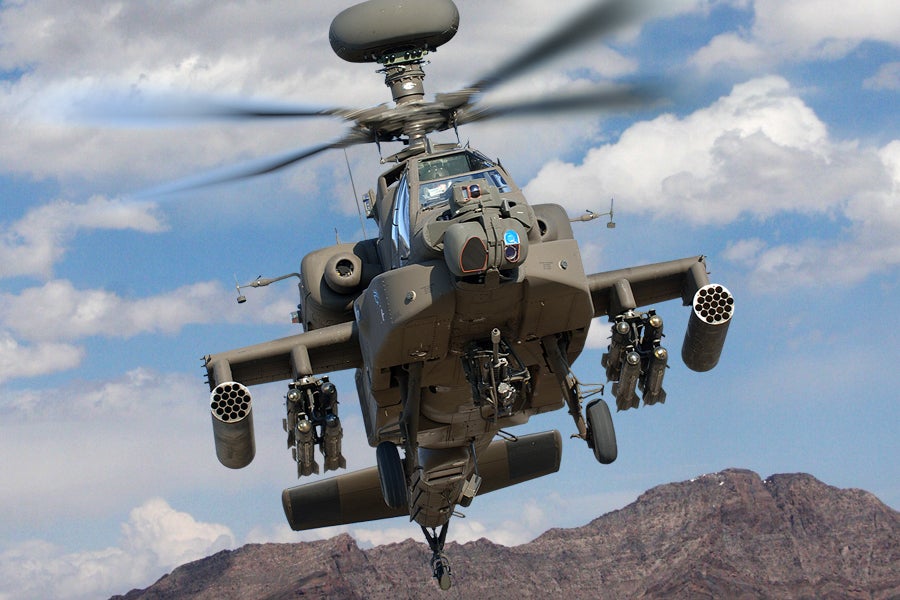
M-TADS, the sensor package on the aircraft’s nose, will also see enhancements with V6. M-TADS has two elements, one for nighttime and one for daytime. The night sensor was improved in 2005 but the day sensor has remained the same since the 80s. V6 will see the addition of the Modern Day Sight Assembly (M-DSA) which doubles the sensor’s field of view and increases resolution. The most important part is the addition of color imagery, the old sensor was monochrome only seeing in black and white. It takes little description to understand how this improves target detection and identification.
The final sensor improvement is the AN/APR-48B Modernized Radar Frequency Interferometer (MRFI), which is able to detect and classify radar emissions then geolocate their origin and cue the fire control radar if needed. This greatly enhances the AH-64Es ability to perform the SEAD mission and survive in the face of advanced enemy air defenses.
Network Enhancements
Aligning with the increasing importance of networking combat systems V6 includes many enhancements in this area. V4 saw the initial installation of Link 16 that will be fully integrated with V6. This will allow the Apache to share identified targets and coordinate weapon employment with allied combat aircraft, naval vessels, and air defense systems.
To communicate with Army unmanned systems the AH-64E has MUMT-2 (Manned-Unmanned Teaming) installed in V1 which allows Apache pilots to directly control MQ-1C and RQ-7B UAVs. Operations in maritime environments will demand the ability to coordinate with USMC and USN unmanned systems so V6 will see the introduction of MUMT-X which both increases the available communication bands but also increases the range out to 30-100 km.
To aid in it’s more traditional role as a close air support platform V6 will add the ability to send and receive data over Soldier Radio Waveform (SRW) which will allow Apache pilots to directly communicate to individual infantry on their Rifleman Radios.
Being able to mesh Link 16, MUMT-X, and SRW will turn Apache Guardian into an information conduit linking ground, naval, and air elements of all types. V4 already demonstrated the ability to receive sensor feed from UAVs and relay that video to ground forces, known as Air to Air to Ground video relay (AAG).
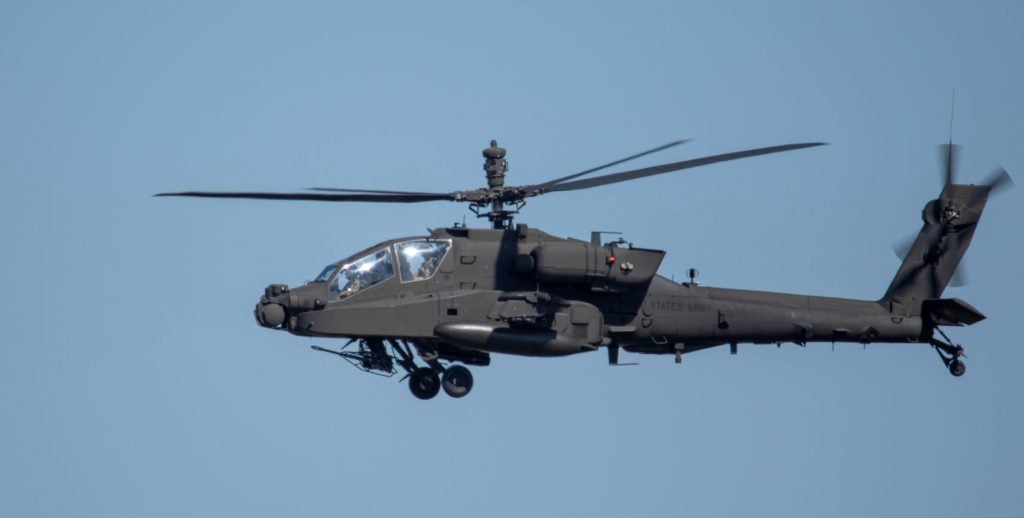
Navigation and Other Systems
One of the larger fears of peer conflict is the loss of GPS connectivity. Operating over the featureless ocean this would be a tragic event for a helicopter. Thus V6 will see the installation of antenna allowing it to utilize radio beacon based Area Navigation (RNAV) and Tactical Air Navigation System (TACAN).
One element of V6 that we currently have next to no information on is the Cognitive Decision Aiding System (CDAS). Presumably, this is an advanced user interface allowing for sensor fusion, automated threat classification, and rapid decision making.
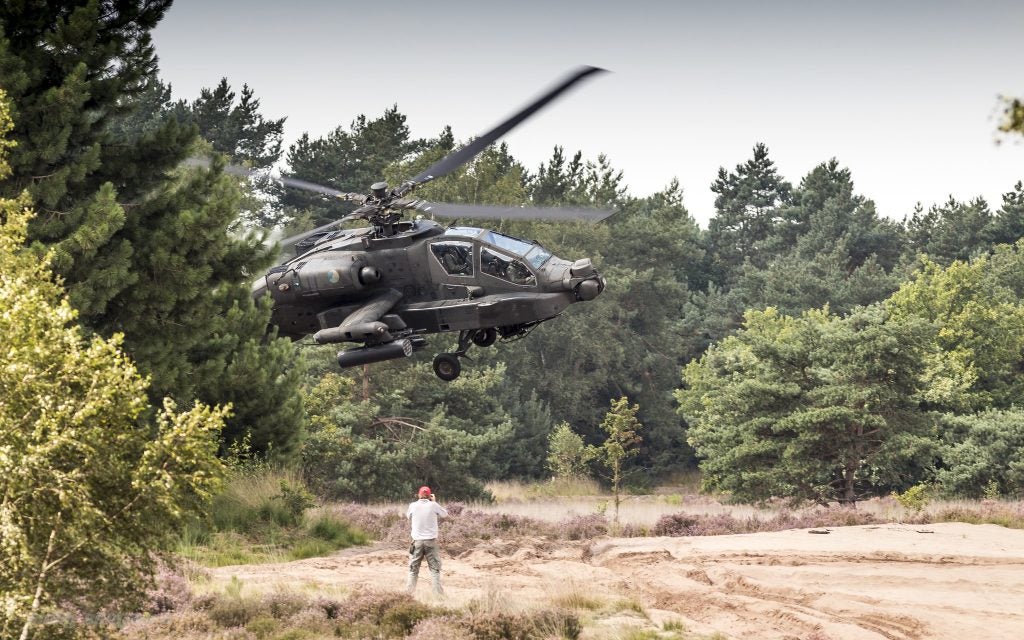
Conclusion
With all the sensor and network enhancements to the aircraft, AH-64E will be to the Army what the F-35 is to the other services. Many export customers such as Taiwan, South Korea, Japan, the UK, and the UAE (note the Strait of Hormuz) have a significant interest in the enhanced maritime capabilities. Through V6, AH-64E will become not only an enhanced weapon and sensor platform but a network bridge between the Army’s ground forces and the aerial assets that support them, both manned and unmanned. However, V6 isn’t all-encompassing. It doesn’t include the integration of JAGM, which was recently test fired against naval targets and will in the future be the primary armament of the aircraft. Nor does it include DIRCM which is instead being developed under the Common Infrared Countermeasure program (CIRCM). Even without these systems, V6 positions the Apache to remain an absolutely vital element of the US military for the near future.
